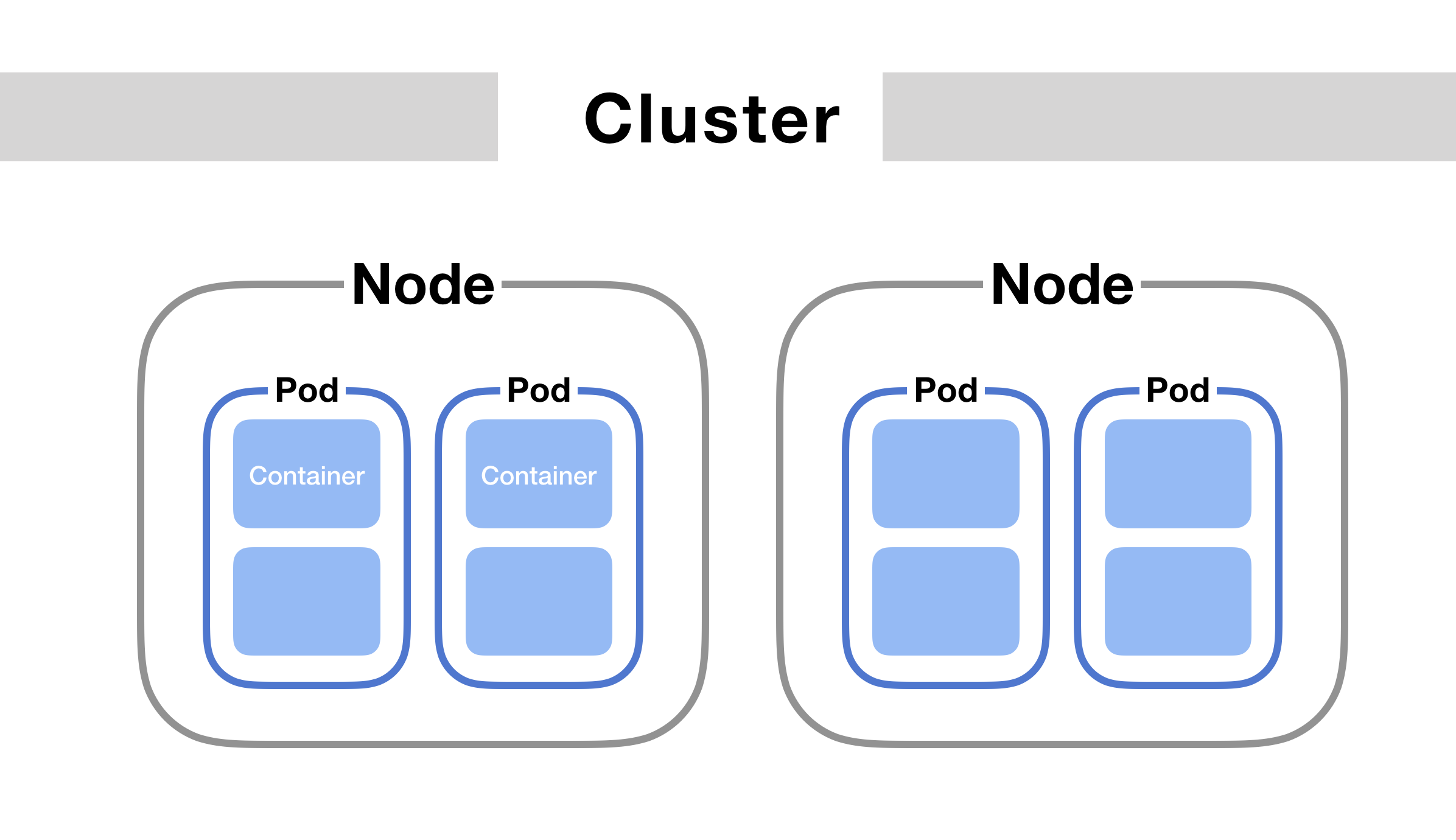Pods are foundational to building and running applications in Kubernetes. They provide the execution environment for containers, encapsulating application components, managing their lifecycle, and facilitating inter-component communication and resource sharing.
A Pod encapsulates one or more containers, storage resources, a unique network IP, and options that govern how the container(s) should run.
Containers within a Pod share the same network namespace, including the IP address and network ports, and can also share storage.
This co-location and shared context make it easy to run closely related and tightly coupled application components in a single unit.
To retrieve information about the containers running within a specific Pod in Kubernetes, we can use the kubectl command-line tool.
The most common commands for this purpose are:
Table of Contents
using kubectl describe pod to get the containers running within a specific Pod
This command provides detailed information about a Pod, including all containers within it.
kubectl describe pod <pod-name> -n <namespace>
Replace <pod-name> with the name of your Pod and <namespace> with the namespace where your Pod is running. If your Pod is in the default namespace, you can omit the -n <namespace> part.
In the output, look for the “Containers” section, which will list each container’s name, image, and other details.
using kubectl get pod with custom output to get the containers running within a specific Pod
For a more concise list that directly shows container names, you can use the kubectl get pod command with a custom output format specified by the -o (output) option.
See also: Mastering the Linux Command Line — Your Complete Free Training Guide
kubectl get pod <pod-name> -n <namespace> -o jsonpath='{.spec.containers[*].name}'
This command uses a JSONPath expression to extract just the names of the containers from the Pod specification.
It outputs the names of all containers within the specified Pod, separated by spaces.
Here’s a breakdown of the command:
- kubectl get pod <pod-name>: This part tells kubectl, the Kubernetes command-line interface tool, to fetch information about a specific Pod. You replace <pod-name> with the actual name of the Pod you’re interested in.
- -n <namespace>: This option specifies the namespace where the Pod is located. Namespaces are a way to divide cluster resources between multiple users. Replace <namespace> with the actual name of the namespace.
- -o jsonpath='{.spec.containers[*].name}’: This part formats the output of the command using a JSONPath expression. JSONPath is a query language for JSON, similar to XPath for XML. Here’s what the expression means:
- -o jsonpath=: This option tells kubectl to output the result in a JSONPath expression format.
- {.spec.containers[*].name}: This JSONPath expression navigates through the JSON structure of the Pod’s definition.
- .spec: Navigates to the spec field of the Pod, which contains the specification of the Pod.
- .containers[*]: The containers field within spec is an array of all the containers defined in the Pod. The [*] part is a wildcard that selects all elements in the containers array.
- .name: For each container in the array, this selects the name field, which is the name of the container.
The command’s output will be the names of all containers within the specified Pod, separated by spaces. This command is particularly useful when you need to quickly identify the containers running within a Pod, especially in debugging or when working with Pods running multiple containers.
Example Usage
Assuming you have a Pod named my-pod in the default namespace and you want to list its containers:
- To get detailed information including container details:
kubectl describe pod my-podThen, look under the “Containers” section of the output.
- To get just the names of the containers:
kubectl get pod my-pod -o jsonpath='{.spec.containers[*].name}'
This will print out the names of the containers within my-pod.
These commands are essential for Kubernetes users to understand what’s running inside their Pods and to assist in debugging and managing containerized applications.
Key Characteristics of Pods
- Atomic Unit: A Pod is the smallest unit that can be deployed, managed, and scaled in Kubernetes. All containers in a Pod are scheduled on the same node (physical or virtual machine) and share resources.
- Shared Context: Containers in a Pod share the same IP address, port space, and volume mounts, allowing them to communicate with each other using
localhostand to share data among themselves. - Ephemeral Nature: Pods are designed to be ephemeral. They can be created, destroyed, replicated, and moved dynamically, depending on the system and user needs.
- Replication and Scaling: While Pods can contain multiple containers, Kubernetes does not directly support horizontal scaling of Pods. Instead, this is achieved through higher-level abstractions like Deployments or ReplicaSets, which create and manage multiple replicas of a Pod for scaling and redundancy.
- Communication and Service Discovery: Pods communicate with other Pods in a Kubernetes cluster through well-defined channels. Kubernetes assigns a unique IP address to each Pod, and Pods can use Kubernetes Services for discovery and to establish stable communication channels.
Use Cases for Pods
- Running Single Containers: The simplest use case is running a single container within a Pod. This is straightforward and mirrors traditional container usage.
- Running Multiple Co-located Containers: When multiple containers need to work together closely, they can be placed in the same Pod. This might include, for example, a main application container and a helper container that pushes data to or pulls data from an external system.
- Resource Sharing and Communication: Containers within a Pod can share volumes, allowing data to be shared between components. They can also communicate over localhost, since they share the network namespace.




